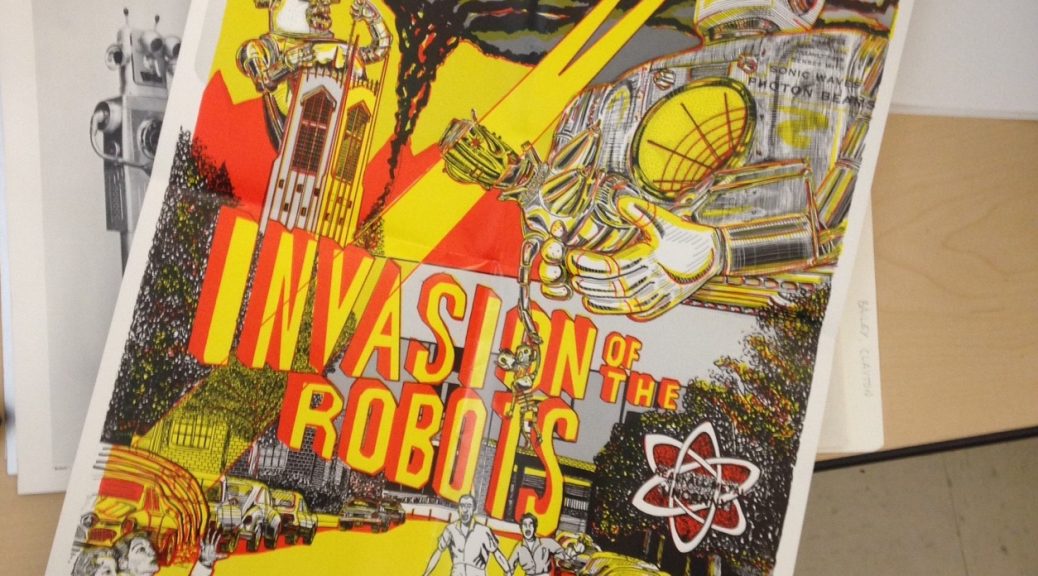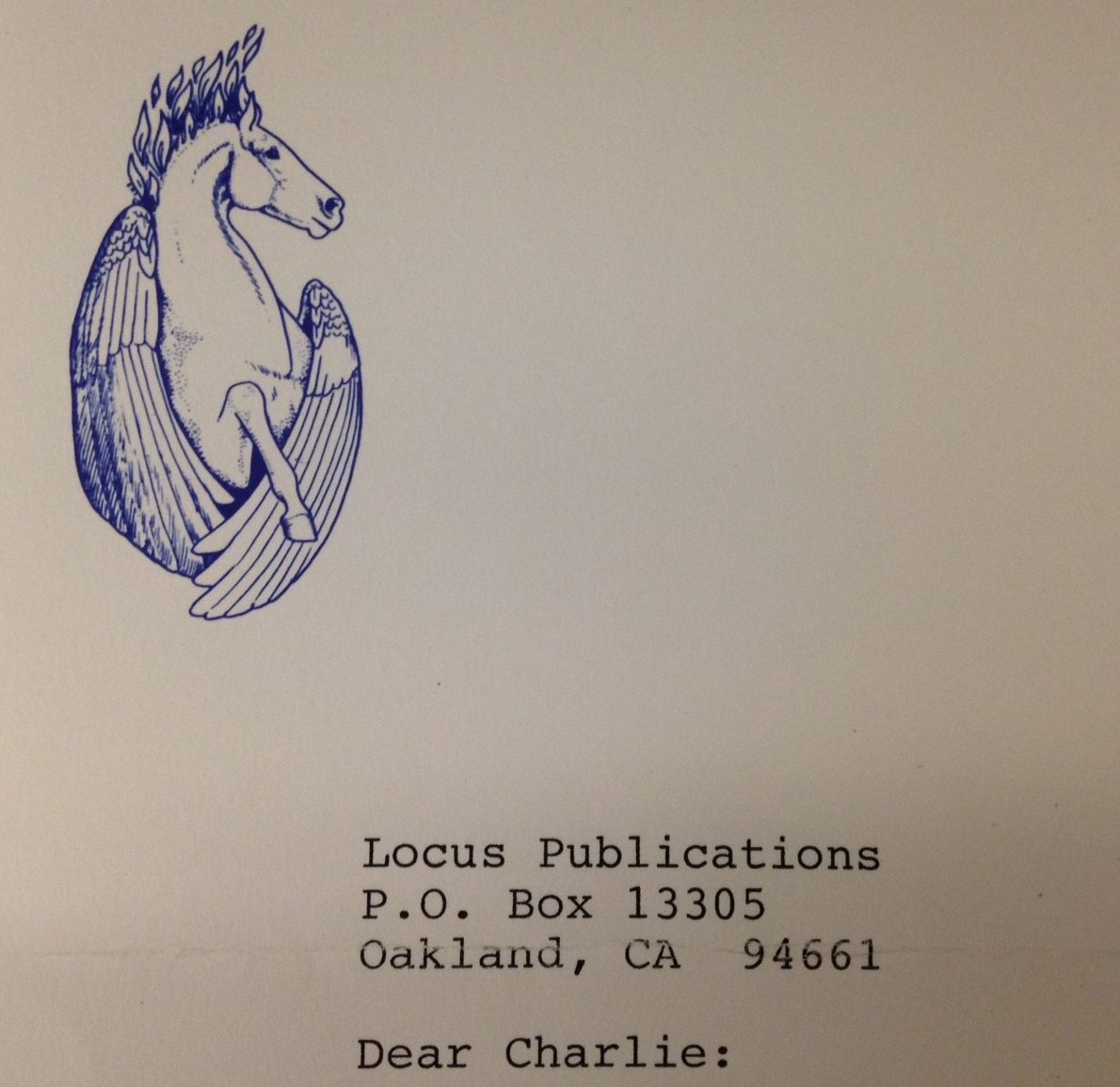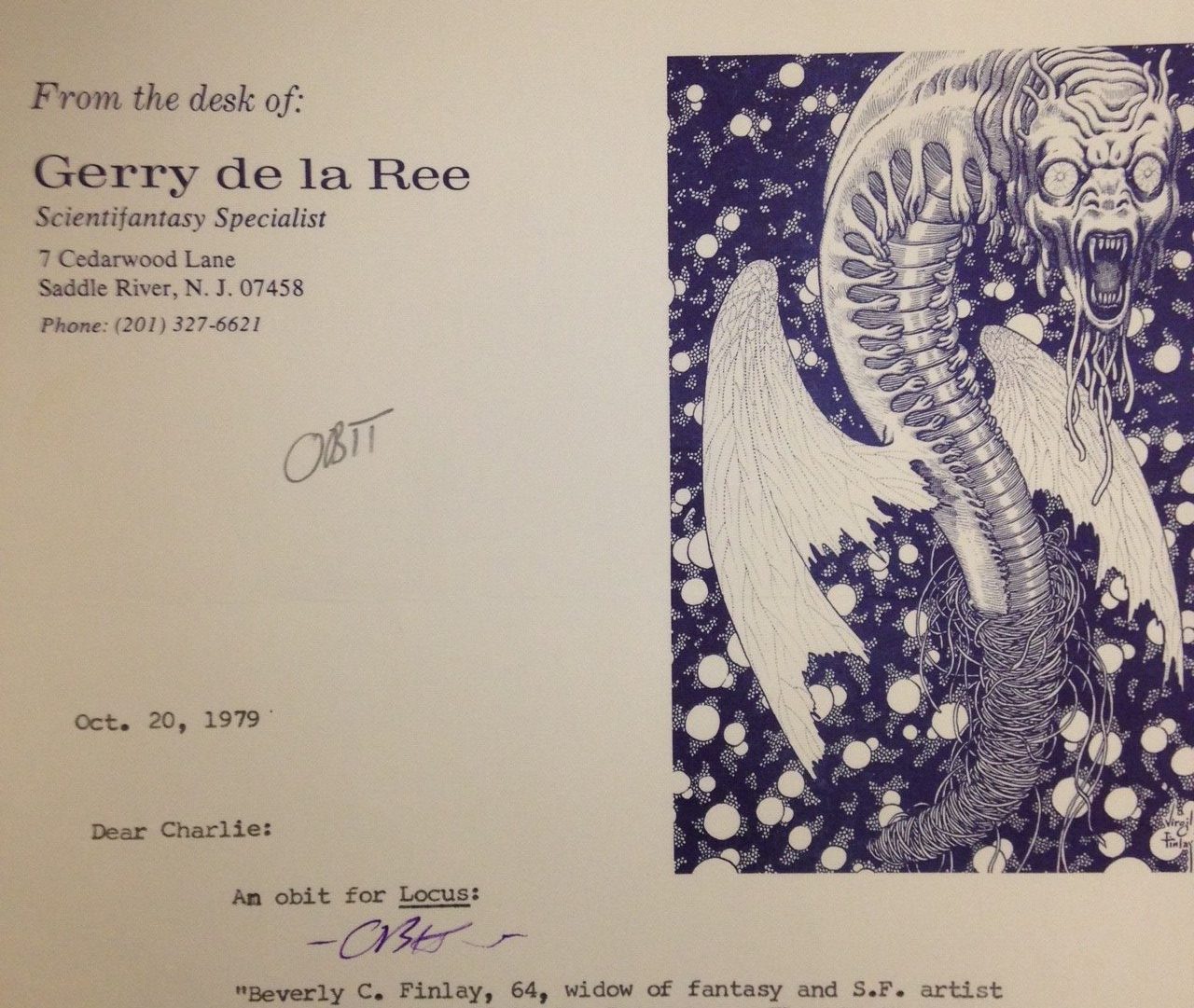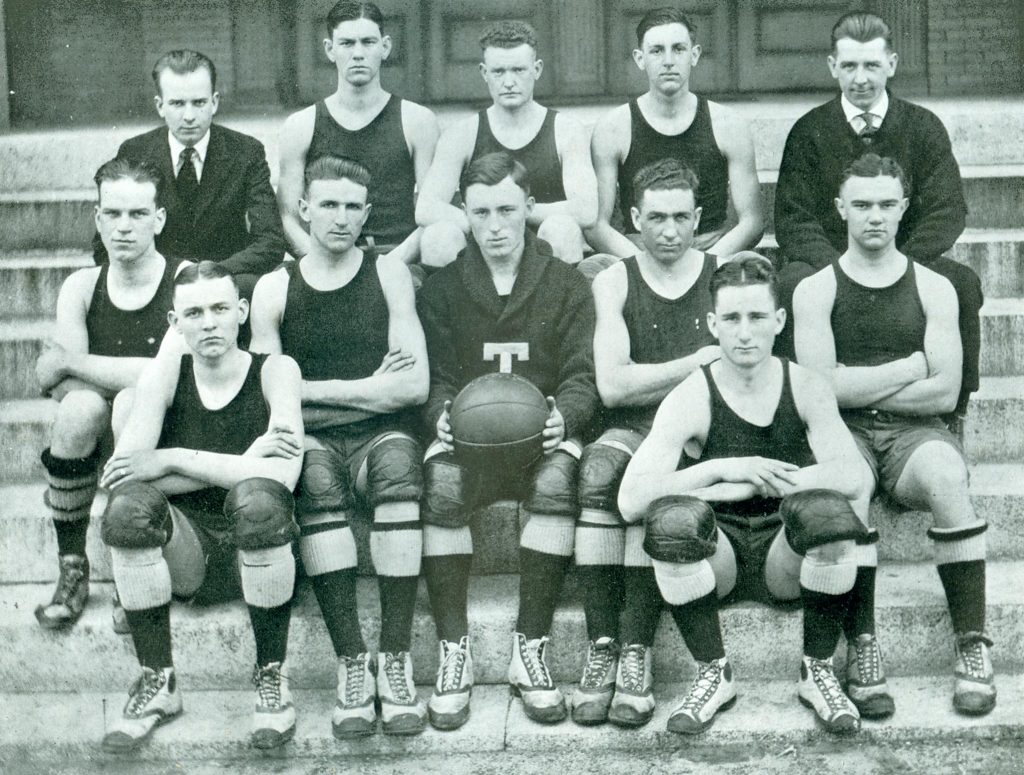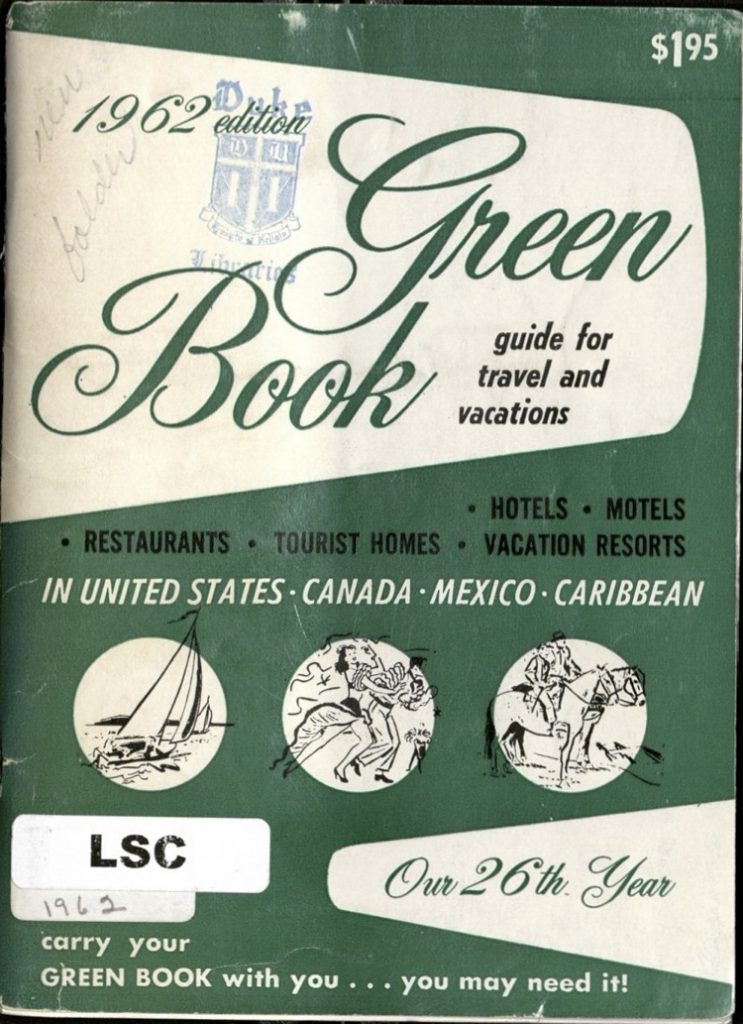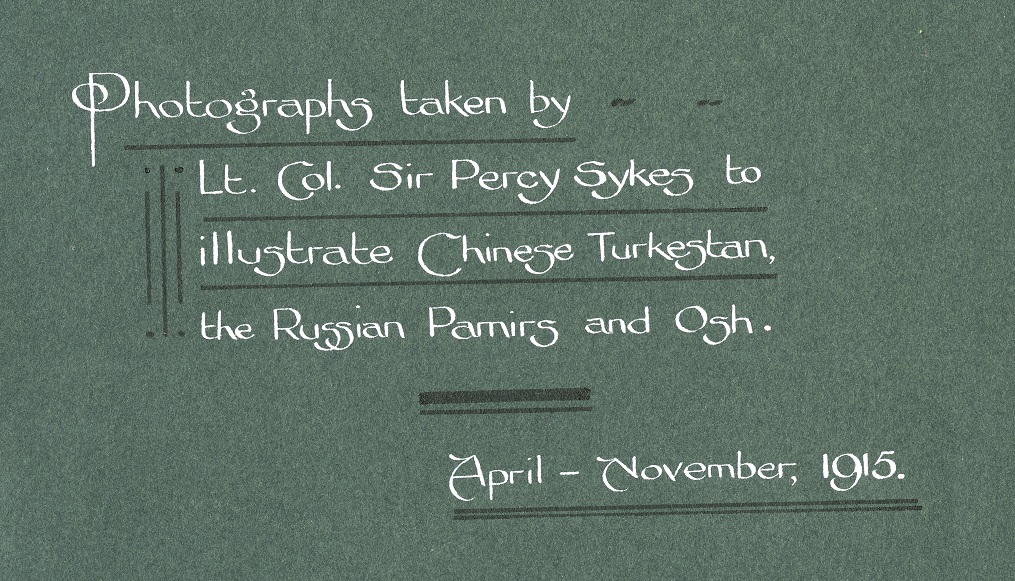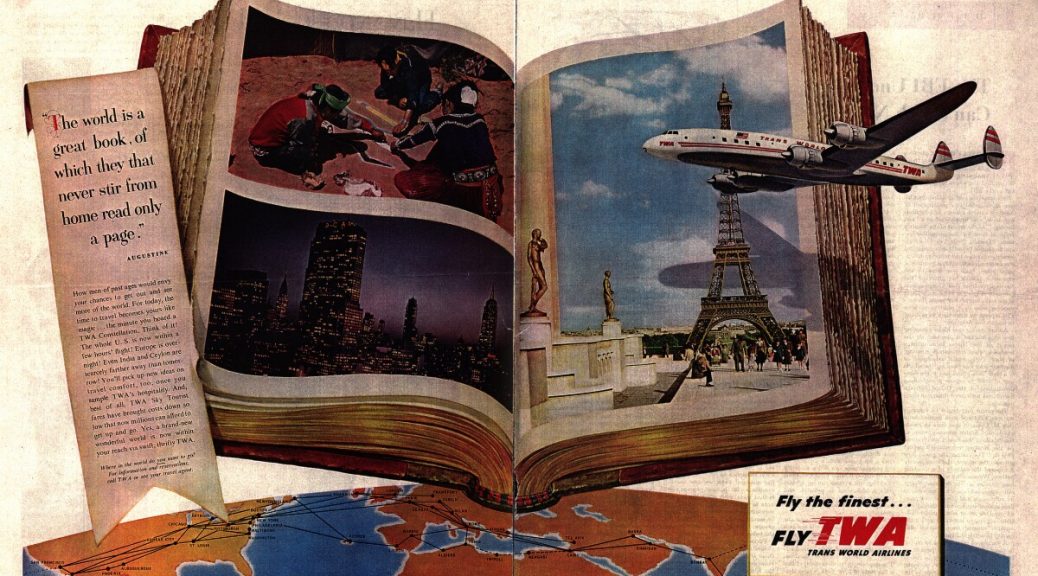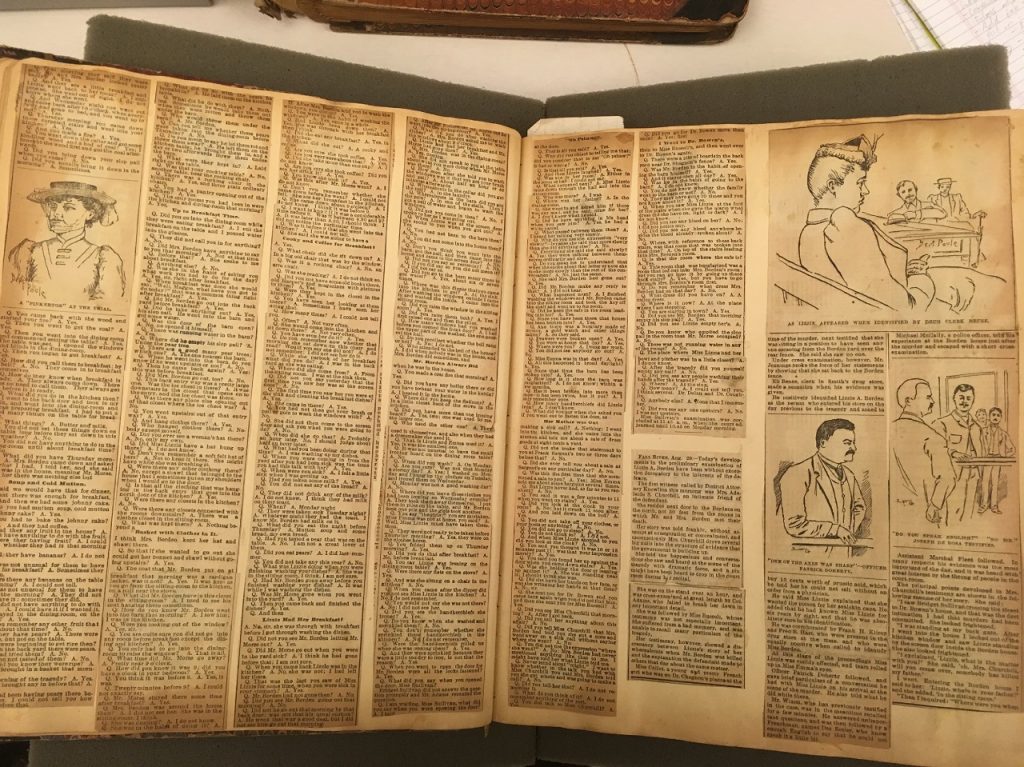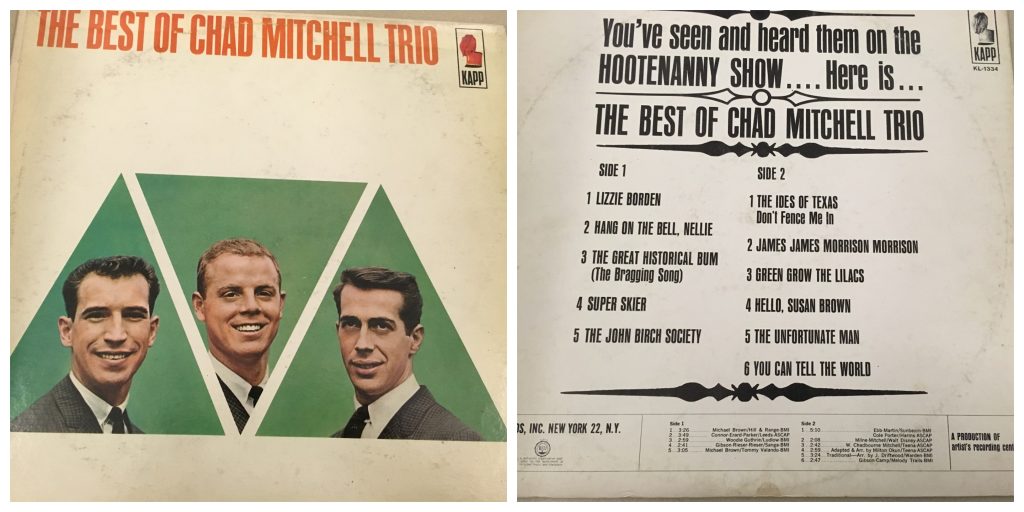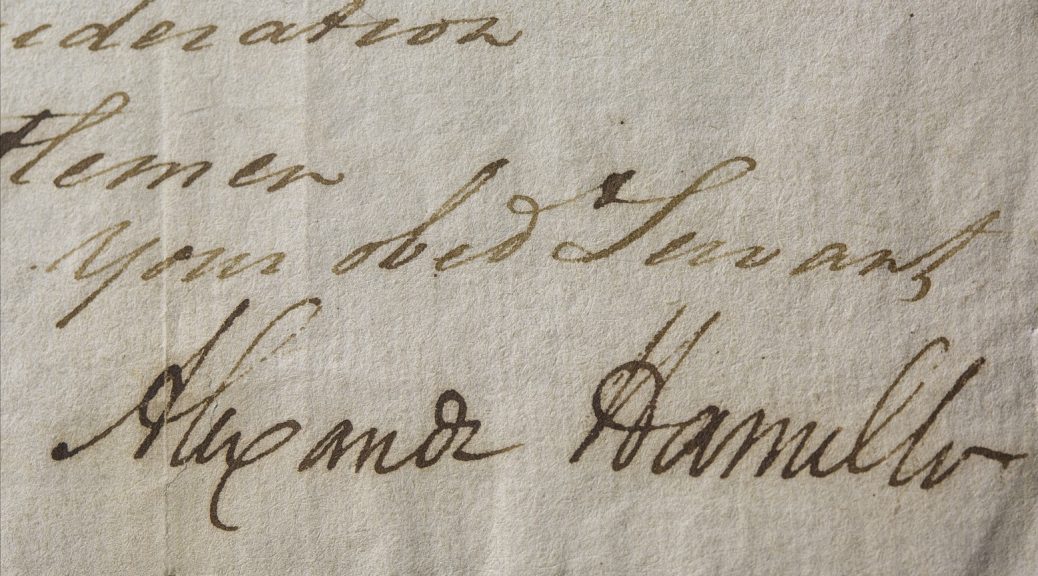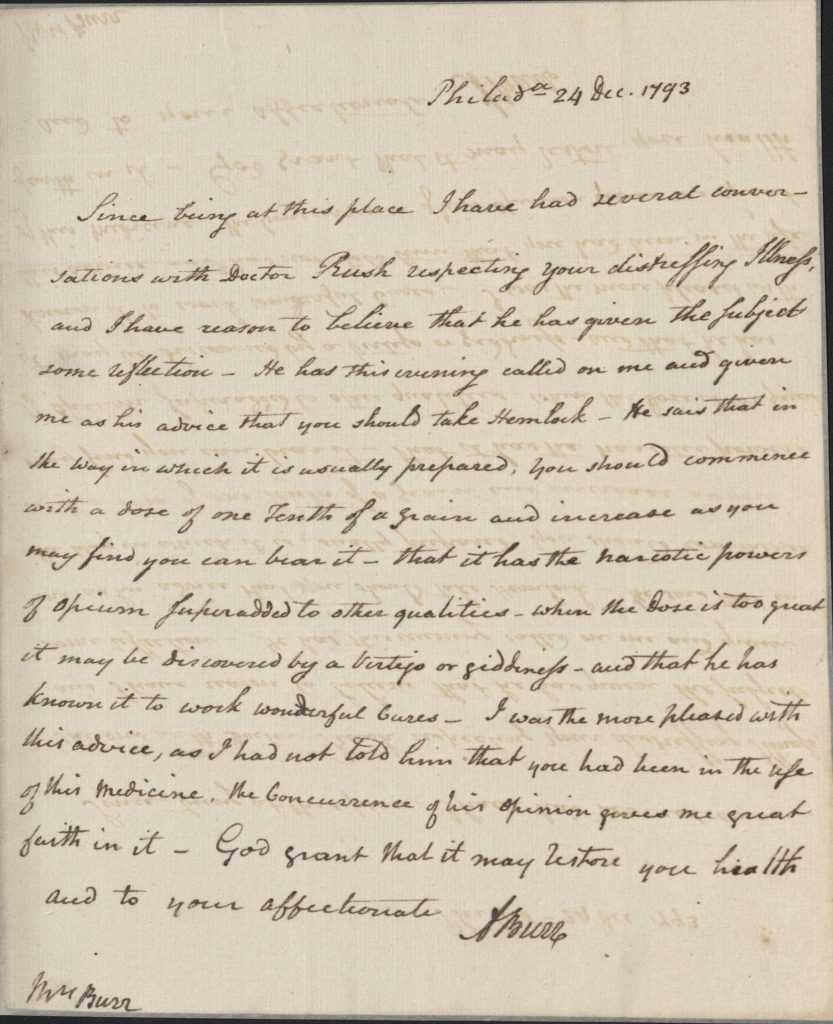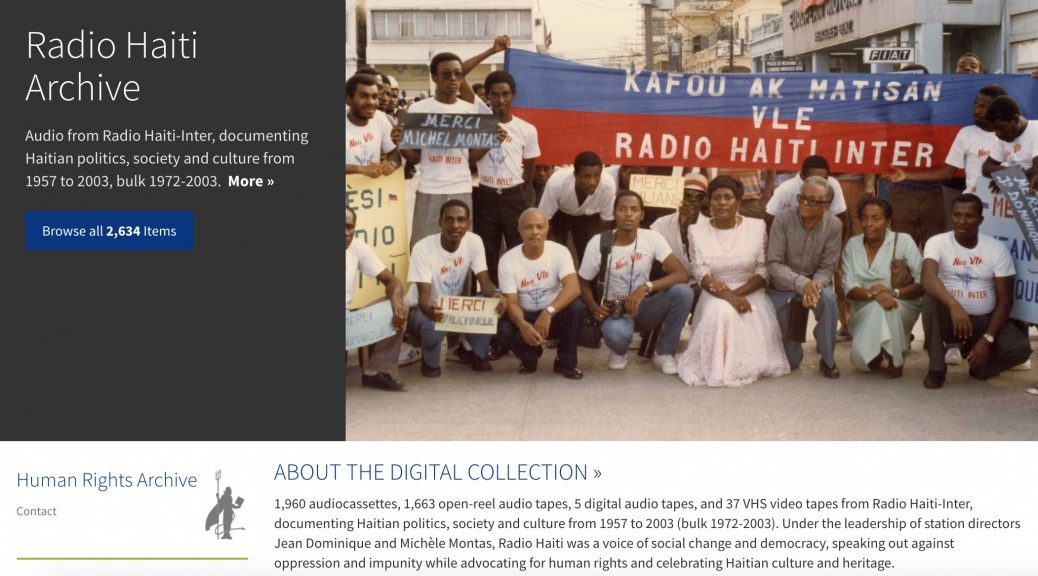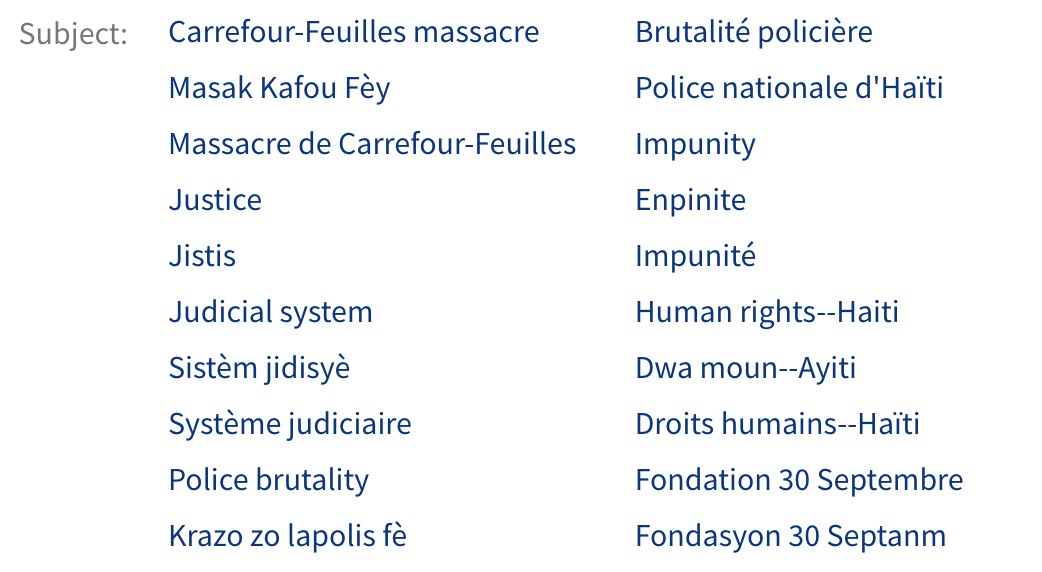Post contributed by Laurin Penland, Library Assistant for Manuscript Processing in Technical Services
Locus, the Magazine of the Science Fiction & Fantasy Field, was started in 1968 by Charles N. Brown, Ed Meskys, and Dave Vanderwerf as a science-fiction news and fan zine, and it’s still going! For all of the years that the staff have been creating the magazine, they’ve also been saving and collecting correspondence, clippings, and books by and about science-fiction, fantasy, and horror writers. In 2018 the Rubenstein Library acquired this massive collection (almost 1,000 boxes). It will be a while before we finish processing and cataloging all the books and papers, but that doesn’t mean that I can’t share a sneak peek of the project mid-process.
A Few Highlights
Correspondence
I recently finished processing the manuscript portion of the collection, which includes seven boxes of files relating to more than 800 authors. My favorite part of these files is the correspondence, the bulk of which was written between 1960 and 2009. Many writers wrote to Locus to share news that could be included in the magazine or to quibble about inaccuracies and to suggest corrections. Overall, the correspondence creates a sense of community among a very diverse and spread-out group of writers; people wanted to know who was publishing what, who changed agents, who was involved with such-and-such scandal or lawsuit, who died, who got re-married, etc. Fans may swoon over the signatures of Octavia E. Butler, Arthur C. Clarke, Issac Asimov, and Ursula K. Le Guin (to name a few). Many of the letters are amicable, some are irate, and some are sassy and humorous. Here, one of my favorite writers, Octavia E. Butler, writes to make an important and sErious correction:

Researchers will find evidence in these letters of a thriving community of writers, publishers, and editors all working to create relatively new and modern genres of fiction.
International Connections
Perhaps of special interest to fans and scholars will be the international ties of the collection, especially to Eastern Europe, the U.S.S.R., China, and Japan. Below, Alexander Korzhenevski provides a report about a science-fiction conference in Sverdlovsk (U.S.S.R.). He writes that the 1989 convention “was the biggest (so far) SF convention in the Soviet Union.” Later in the report he alludes to publishing organizations in the U.S.S.R. by describing how two books arrived at the convention: “Both books were published through (not by, because cooperative organizations here still have no publishing rights) new publishing cooperative organizations (one of them “Text” is headed by Vitaly Babenko), and both of them were delivered to the convention by fans by train (no help from state book-trading organizations).” Korzhenevski’s file also includes a flyer for his business, which is described as “the very first independent literary agency in Russia, operating since 1991.”
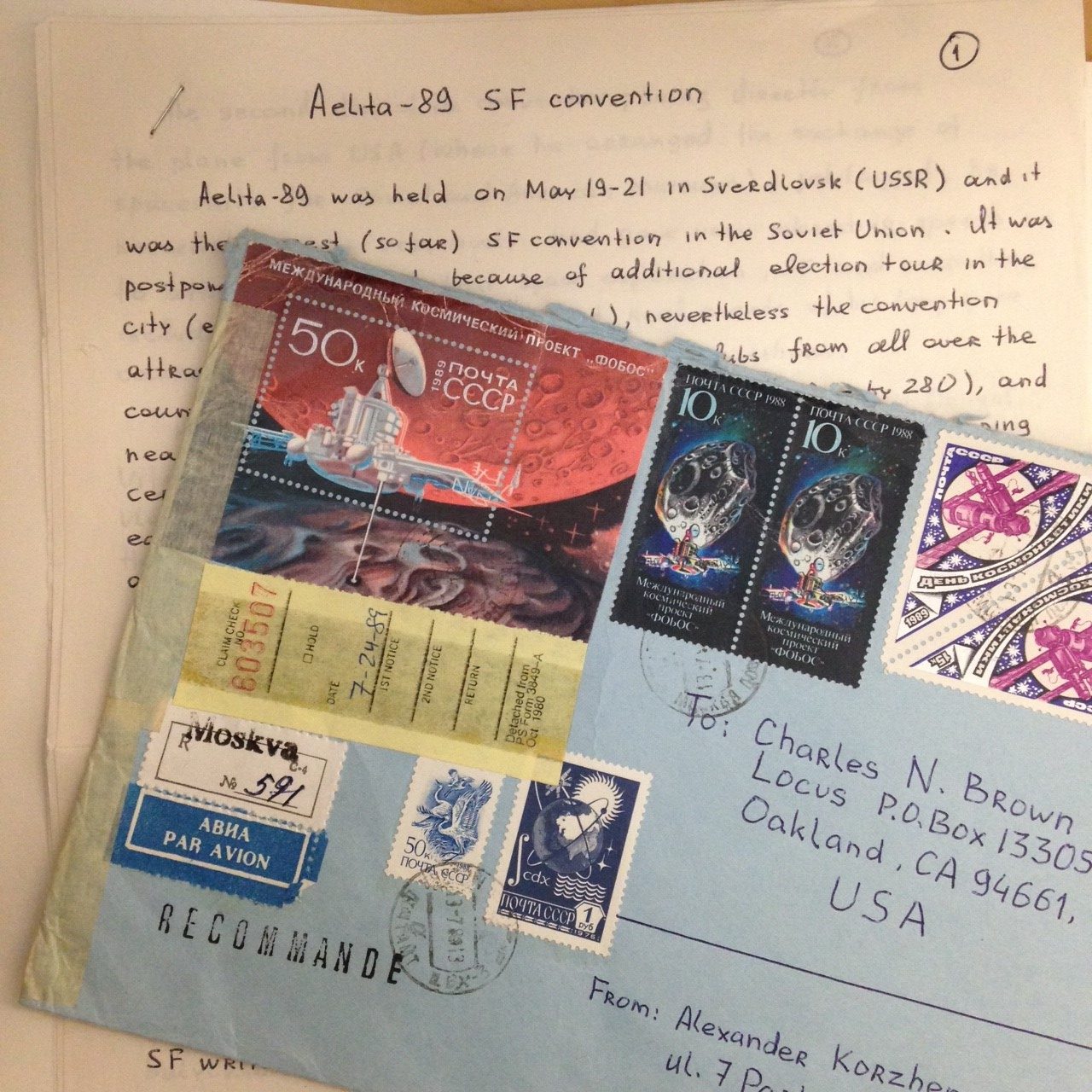
Stationery
This collection has the best stationery by far of any manuscript collection that I have processed. I wonder what researchers in the distant future will think about these creative designs? Here are 14 of my favorites:
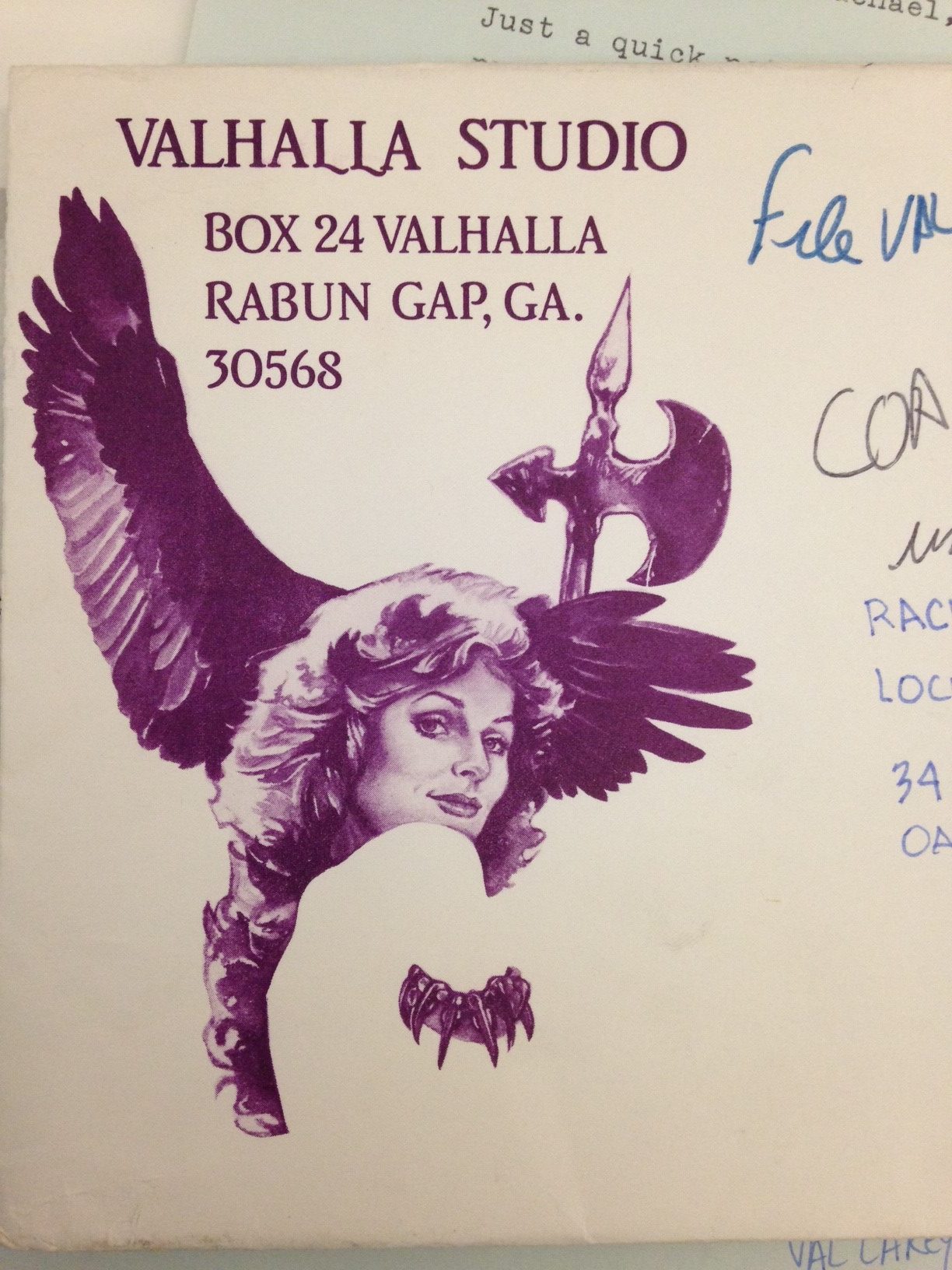 Continue reading Locus Archives Document the History of Sci-Fi
Continue reading Locus Archives Document the History of Sci-Fi


